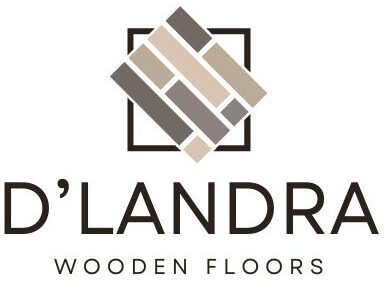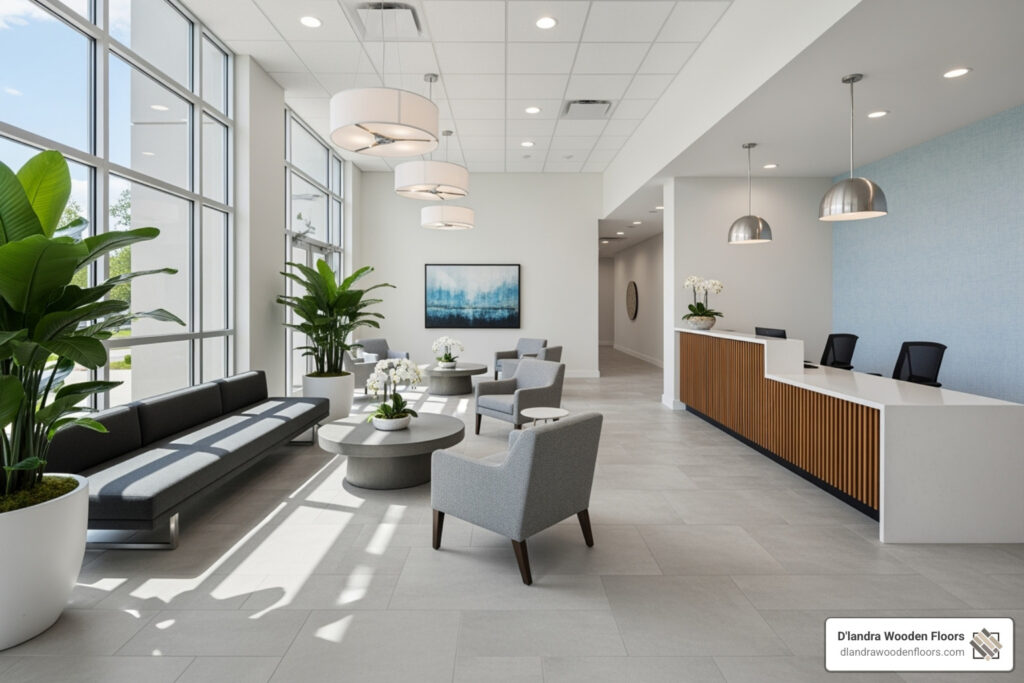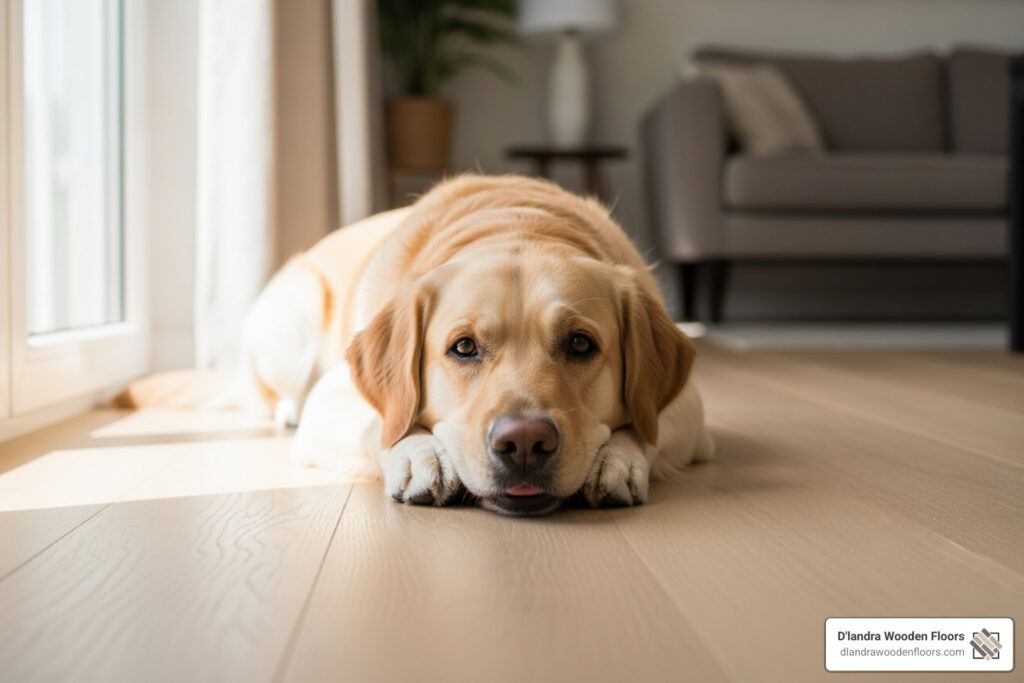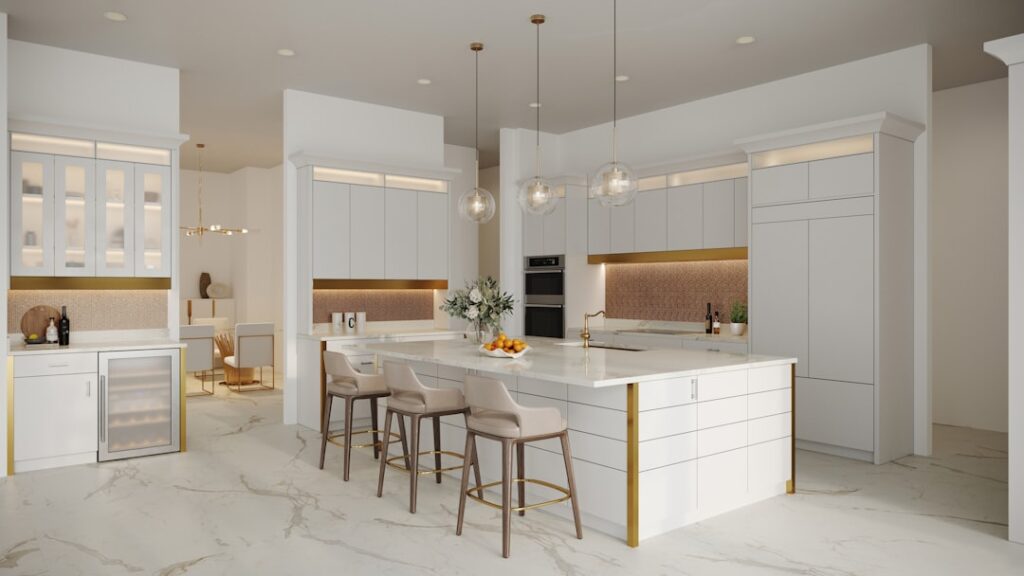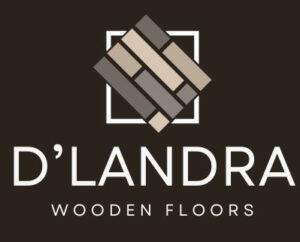Table of Contents
ToggleWhy Resilient Flooring Solutions Matter for Your Business
Resilient flooring solutions are your best defense against the daily wear and tear of high-traffic commercial spaces. If you’re searching for durable, cost-effective flooring that can handle heavy foot traffic while maintaining its appearance, you’re in the right place. These floors get their name from their ability to give slightly under pressure and then spring back, providing comfort and longevity.
Top Resilient Flooring Solutions:
- Luxury Vinyl Tile (LVT) & Plank (LVP) – Versatile, realistic wood/stone looks, fastest-growing flooring segment.
- Sheet Vinyl – Seamless installation, superior water resistance, ideal for healthcare and kitchens.
- Rubber-Visual Vinyl – Excellent slip resistance and comfort, perfect for gyms and airports.
- Linoleum-Visual Vinyl – Sustainable, naturally antimicrobial, long-lasting for schools and hospitals.
Key Benefits:
- Bounces back from impact and compression
- Water-resistant or waterproof options available
- Low maintenance and easy to clean
- Cost-effective compared to hardwood or ceramic tile
- Wide range of realistic designs and textures
This unique resilience translates directly into longer-lasting floors and lower replacement costs for your business. Unlike rigid materials like ceramic tile or concrete, resilient floors absorb impact, making them the go-to choice for hospitals, retail stores, airports, and schools.
I’m Alissa Landra, founder of D’landra Wooden Floors, and I’ve spent over a decade helping South Florida businesses select and install resilient flooring solutions that meet their unique performance and aesthetic needs. Whether you’re upgrading a medical facility, retail space, or corporate office, I’ll guide you through every option to find your perfect commercial champion.
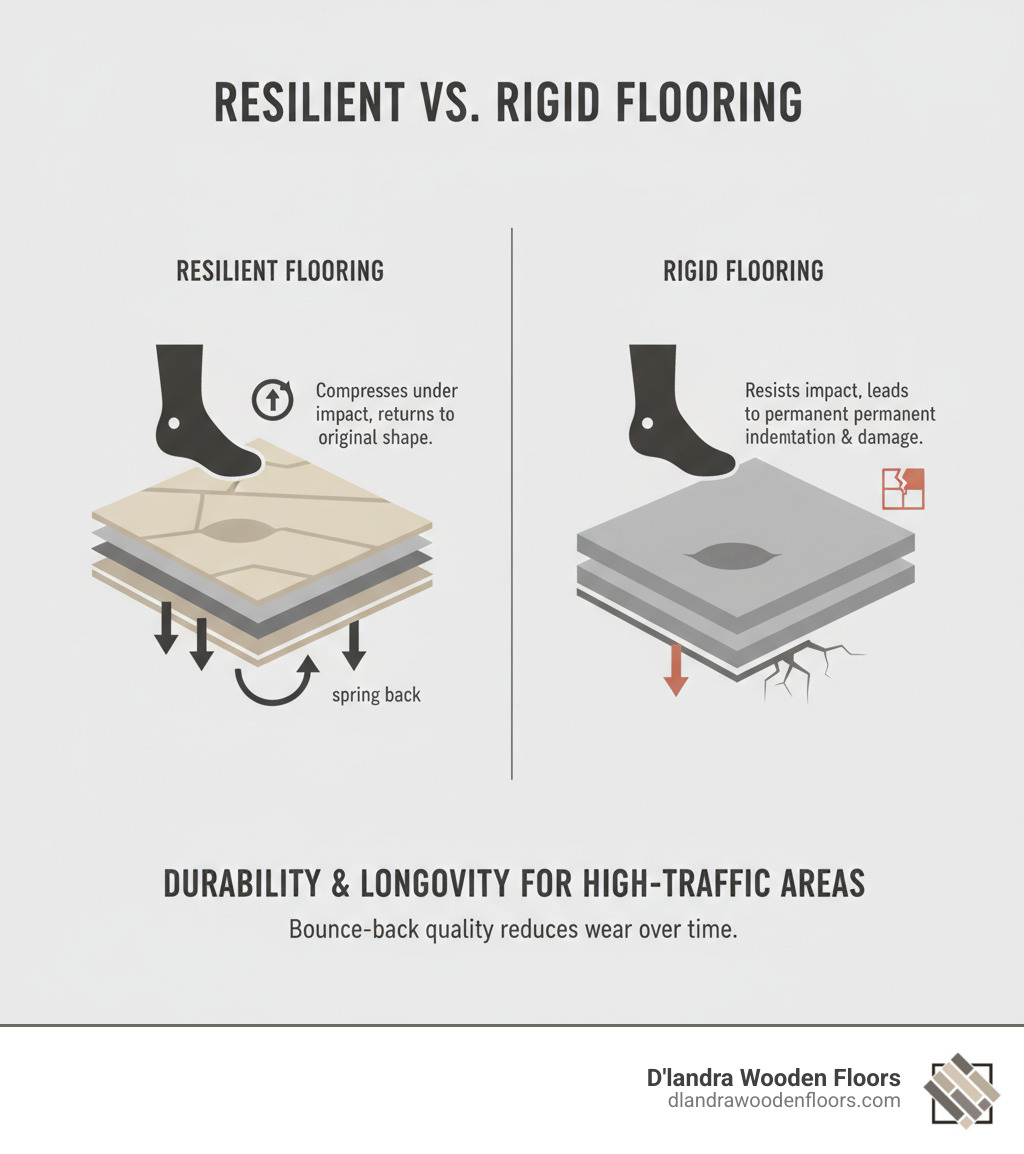
Understanding Resilient Flooring: The Foundation of Durability and Style
When people first hear the term resilient flooring solutions, they often wonder what makes these floors so special. The answer lies in a fascinating physical property: these floors literally bounce back.
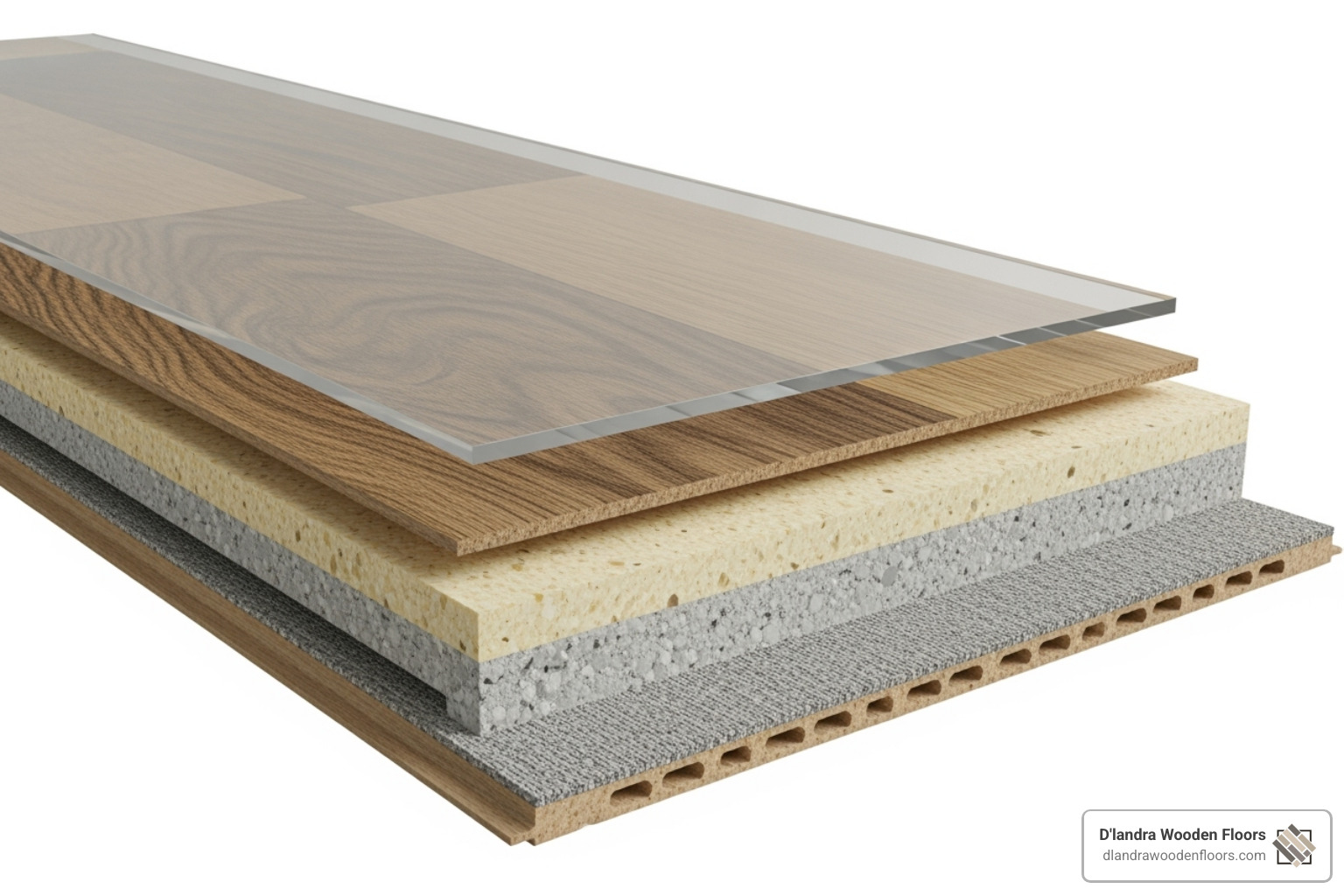
Unlike rigid flooring, resilient floors have inherent elasticity and flexibility. They compress slightly underfoot and then spring back to their original shape. This quality is the foundation of their brilliant performance in commercial spaces, protecting the floor from impacts and providing remarkable underfoot comfort. For anyone standing for hours, the difference is immediately noticeable.
Beyond comfort, these floors offer excellent sound absorption, quieting footsteps and rolling carts in busy environments. Their water resistance ranges from excellent to completely waterproof, making them ideal for areas prone to spills. They are also refreshingly low maintenance, requiring just a quick sweep and damp mop to stay looking great. Plus, advanced printing technologies create visuals so realistic it’s hard to tell they aren’t real wood or stone.
The Core Concept of “Resilience”
The Resilient Floor Covering Institute defines resilient flooring as a non-textile floor covering that characteristically bounces back from compression. This engineering principle is what provides significant ergonomic benefits for people who work on their feet all day, such as retail associates, nurses, and restaurant staff. The floor’s give reduces the jarring impact of rigid surfaces, leading to reduced foot fatigue and less strain on joints. The non-textile surface is also critical for hygiene, as it won’t trap dirt, allergens, or moisture.
Why It’s a Champion for Commercial Spaces
Resilient flooring solutions consistently prove themselves as the champion choice for commercial environments for several key reasons:
- Durability: Engineered for heavy foot traffic, they resist scratches, scuffs, and indentations from constant customer flow, rolling carts, and shifting furniture.
- Longevity and ROI: A floor that maintains its appearance for 15-20 years offers dramatic savings, eliminating frequent replacement costs and business disruption.
- Ease of Cleaning: The smooth, often seamless surfaces are easy to sanitize. Spills wipe up without staining, and there’s no grout to scrub or special treatments required.
- Aesthetic Versatility: You don’t have to compromise aesthetics for performance. Get the look of natural wood in a wet area or sophisticated marble in a sanitary office.
- Safety: Many products feature textured surfaces and slip-resistant formulations to reduce falls, while the inherent cushioning lessens the impact if a fall does occur.
A Deep Dive into the Main Types of Resilient Flooring
Every commercial space has unique needs, and at D’landra Wooden Floors, we know that one size doesn’t fit all. That’s why we offer a comprehensive range of resilient flooring solutions, each engineered to tackle specific challenges.
Luxury Vinyl Tile (LVT) & Plank (LVP): The Versatile Powerhouse
LVT and LVP are the rockstars of the flooring world, delivering the stunning visuals of natural wood and stone with the exceptional durability and water resistance of vinyl. This versatility has made them the fastest-growing flooring segment, able to mimic anything from weathered barn wood to polished marble while standing up to heavy foot traffic.
These products come in two main constructions. Rigid core options (like Stone Plastic Composite or Wood Plastic Composite) are heavy hitters, offering superior stability and dent resistance. They can often be installed over less-than-perfect subfloors and handle temperature fluctuations with ease. Flexible core LVT and LVP are thinner, more cost-effective options that are versatile and still deliver excellent water resistance, making them great for spaces with intricate layouts. The aesthetic possibilities are truly endless, allowing you to achieve any design vision. Discover the Beauty of Luxury Vinyl Flooring to see how realistic these options can be.
Best for: Retail stores, Hospitality venues, Corporate Offices, and Healthcare facilities where you need both beauty and brawn.
Sheet Vinyl: Seamless and Sanitary
In commercial spaces where hygiene and water resistance are absolute requirements, sheet vinyl reigns supreme. It comes in wide rolls (typically 6 or 12 feet), allowing for installation with minimal seams. Fewer seams mean fewer places for dirt, moisture, and bacteria to hide.
For the highest standards of sanitation, seams can be heat-welded to form a completely impervious surface that water cannot penetrate. The material can also be coved up the wall, creating a seamless transition that eliminates grimy corners. This superior water resistance makes sheet vinyl the obvious choice for restrooms and other wet areas. You can learn more in our guide: Vinyl Flooring for Bathrooms.
Best for: Healthcare facilities, Laboratories, Cleanrooms, Commercial Kitchens, and any space where stringent sanitation standards are non-negotiable.
Rubber-Visual Vinyl Flooring: Superior Comfort and Slip Resistance
Modern vinyl technology can now emulate the look, texture, and performance of rubber. These rubber-visual vinyl products excel in slip resistance, which is critical in areas prone to moisture or fast movement. They also provide excellent sound dampening and high impact absorption, making them quieter and more comfortable underfoot. This reduces leg fatigue for anyone spending long hours on their feet. The combination of safety, comfort, and durability makes these floors incredibly versatile, as we discuss in our resource: Vinyl Flooring for Pets.
Best for: Gyms, Fitness Centers, Airports, Play Areas, and Healthcare applications where both comfort and safety are paramount.
Linoleum-Visual Vinyl Flooring: The Sustainable and Durable Option
Traditional linoleum is made from natural materials like linseed oil and wood flour, making it eco-friendly and naturally antimicrobial. Today’s linoleum-visual vinyl products capture that timeless aesthetic with improved performance. These products offer exceptional longevity for commercial applications, with wear warranties often extending 30 years or more. Many also incorporate recycled and bio-based materials, allowing you to align with sustainable building practices without sacrificing performance.
Best for: Schools, Universities, Healthcare facilities, and Government Buildings looking for a sustainable, long-lasting, and hygienic flooring option.
The Science Behind the Strength: Manufacturing and Performance Layers
Understanding what’s inside your flooring helps you choose the right product for your business. Let’s pull back the curtain on how resilient flooring solutions are built.
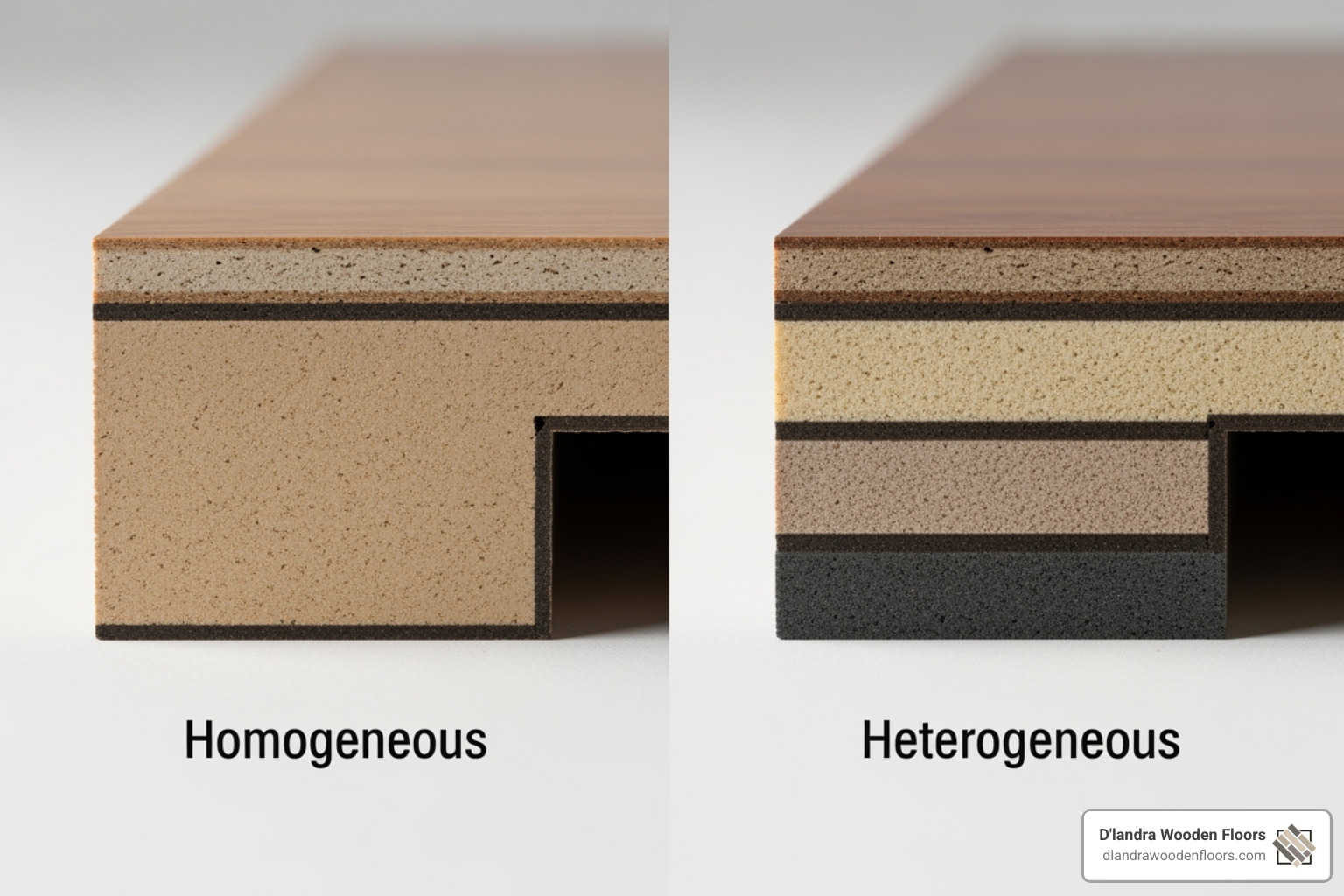
Homogeneous vs. Heterogeneous Construction
Resilient flooring comes in two main constructions:
Homogeneous flooring is made from a single, uniform layer from top to bottom. The color and pattern run through the entire thickness of the material. This through-body construction means that when scratches or gouges occur, they are less visible because the material underneath is identical to the surface. Vinyl Composite Tile (VCT) is a common example.
Heterogeneous flooring is built from multiple distinct layers fused together. This layered construction allows for intricate printed designs and specialized performance features. Most Luxury Vinyl Tile (LVT), Luxury Vinyl Plank (LVP), and printed sheet vinyl products use this method, optimizing each layer for a specific purpose like visuals, stability, or protection.
For more detailed insights into industry standards, the Resilient Floor Covering Institute offers comprehensive resources.
Deconstructing Heterogeneous Resilient Flooring Solutions
Since heterogeneous products like LVT and LVP dominate the commercial market, it’s worth understanding their layers. Each one plays a crucial role in your floor’s performance.
-
The Wear Layer: This is the transparent top coating, typically made of urethane, that acts as the floor’s bodyguard. It protects the design from scratches, scuffs, and stains. Its thickness, measured in mils (thousandths of an inch), is a key indicator of durability. For high-traffic commercial spaces, look for at least 12 to 20 mils.
-
The Print Layer: This is the high-definition photographic film that gives the flooring its realistic wood, stone, or abstract appearance. Modern digital printing allows for high pattern variation, so the floor looks more natural and less repetitive.
-
The Core Layer: This is the backbone of the plank or tile, providing thickness, stability, and flatness. In rigid core products, this is often a Stone Plastic Composite (SPC) or Wood Plastic Composite (WPC), which adds incredible stability and impact resistance.
-
The Backing Layer: This is the foundation. It provides structural integrity, prevents warping, and is the surface that bonds with adhesives or integrates with click-lock systems. Many products include an attached pad for extra comfort and sound dampening.
Key Factors for Choosing Your Ideal Resilient Flooring Solutions
Making an informed flooring decision requires balancing performance, maintenance, and budget. Asking the right questions upfront saves headaches down the road. Let’s walk through the critical factors we discuss with every commercial client at our Coral Springs showroom.
Durability and Performance in High-Traffic Zones
For a retail store, medical office, or hotel lobby, your floor is a workhorse. The single most important specification for durability is wear layer thickness. This transparent top layer is your floor’s armor, measured in mils (one-thousandth of an inch).
For moderate commercial traffic, we recommend a wear layer of at least 20 mil. For extreme conditions like airport terminals or busy hospital corridors, you’ll want 28 mil or higher. This thickness directly translates to years of serviceable life. Beyond the wear layer, dent resistance is crucial for spaces with heavy equipment or rolling carts. This is where rigid core products shine, maintaining a smooth surface under pressure. Modern scratch resistance comes from advanced urethane coatings that outperform older technologies. Always look for products that meet ASTM performance standards for commercial use to ensure your floor is built to last. You can learn more about these features in our article on Vinyl Plank Flooring Benefits.
Water Resistance and Maintenance
Resilient flooring solutions are champions against water, but not all are created equal. Water-resistant floors can handle spills without immediate damage. Waterproof floors can withstand prolonged moisture without structural compromise. For public restrooms, commercial kitchens, or medical facilities, you need truly waterproof options.
Most rigid core LVT and properly installed sheet vinyl fall into the waterproof category. Seam integrity is key. Sheet vinyl with professionally heat-welded seams offers the most impenetrable surface. For demanding wet environments, explore our Waterproof Flooring for Kitchens guide.
The good news is that maintenance is simple: regular sweeping and damp mopping with a neutral pH cleaner is all it takes. Avoid harsh chemicals. Many modern resilient floors come with durable no-wax finishes, eliminating costly and time-consuming stripping and waxing cycles.
Installation and Subfloor Considerations
Proper installation is critical for performance. The method depends on the product and subfloor condition. Click-lock systems are popular for LVT/LVP, as planks snap together for a fast, floating installation. For maximum stability in high-traffic settings, a glue-down application is the gold standard, especially for sheet vinyl and flexible LVT.
The success of any installation starts with proper subfloor preparation. The subfloor must be smooth, clean, and dry. Any significant imperfections will eventually show through the surface. We always conduct moisture and bond tests on concrete subfloors to prevent future issues. Most products need to acclimate to the space for 24-48 hours before installation to prevent expansion or contraction. For professional guidance, learn about our Vinyl Flooring Installation South Florida services.
Comparing Resilient Flooring to Other Commercial Options
- Carpet: While comfortable, it stains easily, traps moisture and allergens, and shows wear paths. Maintenance is demanding.
- Hardwood: Offers a prestigious look but comes with a high price tag and significant maintenance. It’s susceptible to scratches, dents, and water damage, especially in Florida’s humid climate.
- Laminate: Looks similar to vinyl but is not resilient and cannot handle moisture. Water exposure causes irreversible swelling and damage. See our full comparison: Vinyl Plank Flooring vs. Laminate.
In contrast, resilient flooring solutions offer an exceptional balance of durability, water resistance, easy maintenance, and comfort, delivering a better long-term ROI than most alternatives.
Sustainability and Innovation in Modern Resilient Flooring
The flooring industry isn’t standing still, and neither are we. At D’landra Wooden Floors, we’re genuinely excited about how resilient flooring solutions are evolving to meet the demands of environmentally conscious businesses while pushing the boundaries of what’s possible in design and performance.
Eco-Friendly Materials and Healthy Indoor Environments
Creating healthier spaces is a growing priority. Modern resilient flooring leads the charge with low-VOC materials that emit minimal Volatile Organic Compounds, contributing to cleaner indoor air. We prioritize products with third-party certifications like FloorScore® and GreenGuard, which verify that a product meets stringent low-emission requirements.
Sustainability also involves materials. Many of today’s resilient floors incorporate significant recycled content, diverting waste from landfills. Traditional linoleum remains a champion, often containing up to 95% bio-based content from natural materials. We are proud to align with initiatives like the Beautifully Responsible® initiative from the Resilient Floor Covering Institute, which champions flooring that is stylish, mindfully manufactured, and supports good indoor air quality.
Emerging Trends and Future-Forward Resilient Flooring Solutions
Innovation in flooring technology is genuinely exciting. Here are some of the latest advancements:
- Hybrid Resilient Flooring: These products layer the best attributes of different materials, combining the look of wood with the moisture protection of vinyl and the strength of a composite core. The result is a floor that looks authentic but performs exceptionally in demanding commercial environments.
- Advanced Digital Printing: This technology allows for incredibly detailed, high-resolution visuals with far less pattern repetition, creating a more authentic look. It also opens the door to custom designs.
- Embossed-in-Register (EIR) Textures: This innovation synchronizes the surface texture with the visual pattern beneath it. If you see a wood knot, you feel a wood knot, adding a new level of realism.
- Rigid Core Technology (SPC & WPC): These cores continue to evolve, offering improved dimensional stability, greater dent resistance, and more forgiving installation over imperfect subfloors.
Frequently Asked Questions about Resilient Flooring
Over the years, we’ve noticed certain questions come up again and again from our commercial clients in South Florida. Here are the most common ones:
What is the most durable type of resilient flooring for commercial use?
For most commercial applications, we recommend Luxury Vinyl Tile (LVT) with a thick wear layer of 20 mil or higher. It strikes an excellent balance of durability, aesthetics, and low maintenance. It handles heavy foot traffic while looking great for years.
While Vinyl Composite Tile (VCT) is technically very durable, it requires intensive maintenance like regular waxing and stripping to maintain its appearance. For this reason, most businesses today prefer the easier upkeep of modern LVT.
Linoleum is another durability champion, often backed by warranties of 30 years or more, making it ideal for institutions where longevity is the top priority.
How does the wear layer thickness affect performance?
The wear layer is the clear, protective top surface, measured in mils (one-thousandth of an inch). It’s the single most important factor in determining how long your floor will look new. A thicker wear layer provides more material to absorb scratches, scuffs, and stains from daily traffic. For general commercial use, aim for a minimum of 20 mil. For very heavy traffic—like airports or major retail stores—you’ll want 28 mil or higher. That extra thickness translates directly into years of additional life for your floor.
Is resilient flooring completely waterproof?
Yes, the materials themselves—like luxury vinyl and sheet vinyl—are inherently waterproof. However, the overall water-tightness of your floor depends on the product and installation method.
Sheet vinyl is the gold standard for water protection. When installed with heat-welded seams, it creates a completely impervious surface where water has nowhere to go. This makes it the top choice for hospitals, labs, and commercial kitchens.
Luxury Vinyl Tile (LVT) and Plank (LVP) are also made from 100% waterproof materials. Modern click-lock systems are engineered to prevent water from seeping between planks, offering excellent protection for most commercial spaces.
Conclusion
Choosing the right flooring for your commercial space is a decision that impacts your daily operations, bottom line, and customer impressions. Resilient flooring solutions stand out as the champion choice for South Florida businesses because they deliver on all fronts: durability, design flexibility, and exceptional long-term value.
From the seamless, sanitary protection of sheet vinyl in healthcare to the stunning, realistic visuals of LVT in retail, there is a resilient product engineered for any commercial environment. Understanding the construction, from the core to the critical wear layer, empowers you to make an informed decision that will pay dividends for years.
At D’landra Wooden Floors, we don’t just sell flooring; we partner with businesses throughout South Florida—from Coral Springs to Boca Raton and Pembroke Pines—to find the perfect match for their unique needs. Your floor is part of your brand, and we’re here to ensure it performs beautifully day after day.
Ready to transform your commercial space with flooring that works as hard as you do? Explore our comprehensive Waterproof Luxury Vinyl Tile Guide to see stunning options, or visit our showroom to find your perfect floor together.
